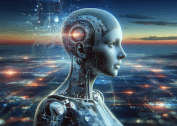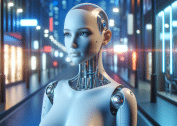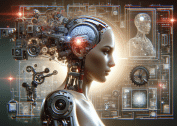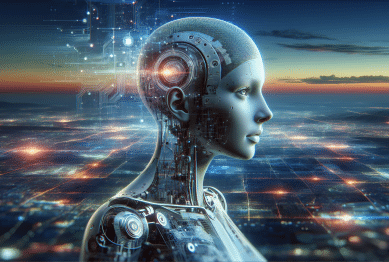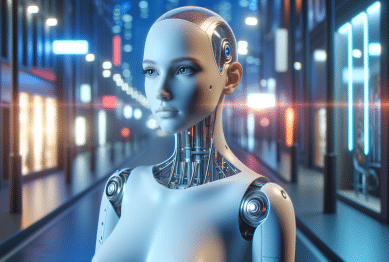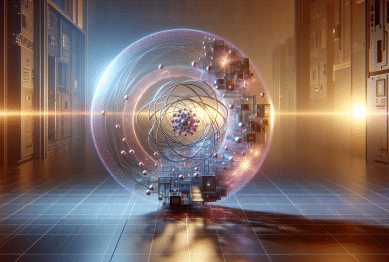Explore how artificial intelligence is quietly transforming everyday workplaces and boosting productivity. This guide unpacks practical examples, potential opportunities, and ethical considerations—so you can better understand how AI integrates into daily workflows and the future of jobs.
Understanding Artificial Intelligence in the Modern Office
Artificial intelligence (AI) has rapidly integrated into office life, offering automations and insights unheard of a decade ago. Some workers might not even realize that many software tools now use machine learning to boost productivity. For instance, AI can help with data entry, schedule coordination, and even real-time language translation during global meetings. These shifts redefine the meaning of a typical workday, streamlining operations and influencing how information technology blends with traditional business routines.
Companies increasingly rely on AI-enabled platforms to analyze emails, manage calendars, and filter urgent tasks. Chatbots assist in IT troubleshooting while smart document processors extract and organize key information from reports, contracts, and internal memos. All these tasks once demanded time-consuming, repetitive labor. By handling them swiftly, artificial intelligence frees employees to focus on creative or relationship-driven projects that require human thought. This combination of machine precision and human nuance creates opportunities for more meaningful work, even as it challenges conventional job boundaries.
What makes modern AI applications so appealing is their adaptability. Machine learning algorithms can recognize patterns in workflow data and proactively offer suggestions—like recommending quicker routes to complete standard tasks or flagging schedule conflicts in advance. This makes routine administration smoother. Some organizations leverage AI to scan internal communication for emerging project risks, helping teams identify obstacles before they escalate. Over time, AI-powered improvements demonstrate why digital transformation has become a major trend in today’s workplaces.
Real-World Examples of AI in Everyday Business Tasks
Perhaps the most noticeable use of artificial intelligence in offices is automated customer service. From e-commerce platforms to healthcare providers, smart chatbots and virtual agents answer queries, process returns, and even book appointments without human intervention. These systems operate 24/7, providing instant responses and learning from each customer interaction. As a result, they drive up satisfaction while reducing the workload on support staff. Employees are then redirected to more complex cases or creative brainstorming sessions, which adds value to both the company and the customer.
Email filtering and spam detection have also evolved with AI. Advanced algorithms can spot suspicious patterns, phishing attempts, and unwanted marketing emails with higher accuracy than traditional filters. In addition, data analytics platforms now use artificial intelligence to assemble key business performance insights from large datasets, making it easier for managers to spot emerging trends or detect inefficiencies. Automated scheduling assistants sift through calendars and preferences, suggesting optimal meeting times without endless back-and-forth and minimizing workplace friction.
Another game-changer is how AI assists with recruitment and HR management. Software platforms routinely scan resumes and cover letters using natural language processing, ranking candidates by evaluating both qualifications and subtle cues. Some systems flag unconscious bias in job descriptions or hiring decisions, adding a layer of fairness to recruitment. Meanwhile, AI-driven employee training tools tailor e-learning content to each individual’s pace and performance, making upskilling efforts more personalized and efficient. These real-world applications are gradually transforming back-office functions.
Artificial Intelligence and Workplace Productivity
Improved productivity is a frequent promise of integrating artificial intelligence into business operations. By automating routine data processing, compiling financial summaries, or generating basic reports, AI allows employees to focus on decision-making and critical thinking. This lets teams operate more efficiently, often allowing smaller teams to achieve the output of much larger groups. Tools like smart project tracking systems and virtual assistants streamline collaboration, timely reminders, and document management—contributing to effective time management and reduced project delays.
Beyond time-saving, AI enhances workplace productivity by adapting to individual user preferences. Some platforms adjust workflows based on which tasks a user completes efficiently, making recommendations tailored to specific skills or knowledge gaps. AI can even flag when workers are overloaded and propose workflow adjustments, creating a more balanced and manageable schedule. As employees learn to trust these helpful suggestions, fewer bottlenecks arise and overall productivity increases in measurable ways.
The impact of artificial intelligence on productivity extends to remote and hybrid work arrangements as well. AI tools enable teams spread across multiple locations to collaborate seamlessly on shared documents, track progress, and schedule meetings across time zones without confusion. Video conference platforms use facial recognition and sound quality enhancement to optimize the virtual meeting experience. By supporting flexible and adaptive work, artificial intelligence is helping shape the modern definition of productivity.
Machine Learning and Data Security Considerations
With the expanded adoption of artificial intelligence comes an increased focus on data security. AI-powered applications routinely process vast amounts of sensitive information, from employee records to strategic financial datasets. Modern information technology teams prioritize data governance, adopting strict access controls and robust encryption protocols to protect company secrets and personal privacy. Keeping confidential data safe is critical as organizations rely more deeply on machine learning for operational efficiency and informed decision-making.
Cybersecurity experts note that AI is also being used to bolster defense systems. Machine learning algorithms can recognize patterns in network traffic and quickly identify potential threats, such as phishing or malware attempts. Smart security systems automatically alert IT managers or even isolate compromised machines, which helps minimize risk. At the same time, these technologies create a need for ongoing training and vigilance, since advanced attackers may also exploit artificial intelligence for more sophisticated intrusions.
The ethical dimension of data security matters as well. Organizations must weigh the convenience and power of AI against the ethical responsibility to ensure transparency, bias reduction, and user privacy. Some firms are now appointing AI ethics officers or forming review boards to audit algorithmic decisions. Transparent policies and open communication about how employee and client data is used foster trust. This ongoing balancing act between utility and privacy will likely shape how AI-driven security policies evolve in future workplaces.
AI Upskilling: How Staff Adapt to Change
The wave of workplace automation has triggered a renewed focus on digital skills development and workforce transformation. As AI handles more repetitive duties, staff are increasingly encouraged to train in emerging technologies. Programs in data analytics, digital project management, and applied machine learning are popular. Many organizations also offer free courses or sponsored lessons so employees can understand both the basics and advanced applications of artificial intelligence—a proactive approach aimed at long-term growth and adaptability.
Upskilling training goes beyond technical instruction. AI-adaptive organizations blend digital skills with soft skills development—like creativity, emotional intelligence, and cross-cultural communication—since these human abilities complement what machines lack. Major e-learning providers and public universities have expanded course offerings in these areas to satisfy demand. Workers with foundational digital knowledge and strong emotional skills are especially well positioned to thrive as AI adoption accelerates.
This move toward upskilling isn’t only about individual advancement; it’s also a strategic advantage for organizations. Teams that can fluidly combine artificial intelligence and human expertise innovate faster and adjust confidently to shifting industry needs. Employers see increased adaptability and resilience, which is crucial in unpredictable business climates. AI-driven transformation hence provides motivation for lifelong learning, ensuring that both individuals and companies benefit together.
Ethics and the Future of Employment
Artificial intelligence raises important social and ethical questions about labor, job disruption, and workplace diversity. Headlines often focus on whether AI will replace workers, especially in administration, accounting, or support services. The reality is nuanced. While automation can lead to job displacement for some, it also creates new roles centered on managing, interpreting, and auditing machine-driven decisions. These changes reflect how technology reshapes demand for both technical and analytical skills.
Diversity, fairness, and equal opportunity in AI systems are also under scrutiny. Biased algorithms can reinforce existing inequalities in hiring, promotions, or performance review processes. This has prompted calls for transparent AI development processes and diverse engineering teams. Companies are being held accountable for testing their systems to minimize bias and ensure fair treatment. The future of employment with artificial intelligence depends on continuous improvement, surveillance, and responsible governance.
Many experts anticipate that AI will augment, not replace, human work for most sectors. Automated systems take on repetitive, precise, or hazardous tasks, while people focus on interpreting results, creative thinking, and empathetic leadership. New career paths—such as AI ethicists, data analysts, and machine learning product managers—are surfacing in direct response to these shifts. As technology expands its reach, collaboration between people and machines will likely define the jobs of tomorrow, requiring open-mindedness and adaptability from everyone.
References
1. National Institute of Standards and Technology. (n.d.). Artificial Intelligence. Retrieved from https://www.nist.gov/artificial-intelligence
2. U.S. Equal Employment Opportunity Commission. (n.d.). Artificial Intelligence and Algorithmic Fairness. Retrieved from https://www.eeoc.gov/artificial-intelligence-and-algorithmic-fairness
3. Stanford Institute for Human-Centered Artificial Intelligence. (n.d.). Artificial Intelligence Index Report. Retrieved from https://hai.stanford.edu/research/ai-index-report
4. Brookings Institution. (n.d.). How artificial intelligence is transforming the world. Retrieved from https://www.brookings.edu/research/how-artificial-intelligence-is-transforming-the-world/
5. Pew Research Center. (n.d.). Artificial Intelligence and the Future of Humans. Retrieved from https://www.pewresearch.org/internet/2018/12/10/artificial-intelligence-and-the-future-of-humans/
6. World Economic Forum. (n.d.). Jobs of Tomorrow: Mapping Opportunity in the New Economy. Retrieved from https://www.weforum.org/reports/jobs-of-tomorrow-mapping-opportunity-in-the-new-economy


